Ring Mountain is an amazing place to hike for wildflowers. It is a small mountain right in the middle of the San Francisco Bay Area, surrounded by houses, and yet it still has a wide variety of wonderful wildflowers. Even more amazing, it is home to several very rare wildflowers, one of which is only found at this location. Amazing!
On this visit we hiked up the Phyllis Ellman trail on the lookout for the extremely rare Tiburon mariposa lily.
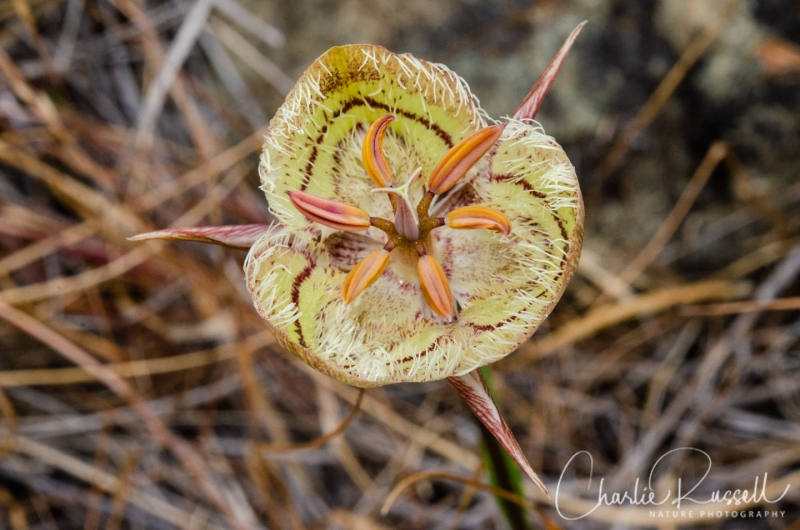
The Flowers
Here are some my favorites from this hike. The star of this visit was the Tiburon Mariposa Lily that I’ve shown above. This is only found on the serpentine soils at the top of Ring Mountain.
Earlier in the year you can find the Oakland Mariposa Lily in the same area. It is a rare plant also, but not as rare at the Tiburon Mariposa Lily. We didn’t find one on this trip, but I thought I would include this photo taken from a prior visit to Ring Mountain, for comparison.
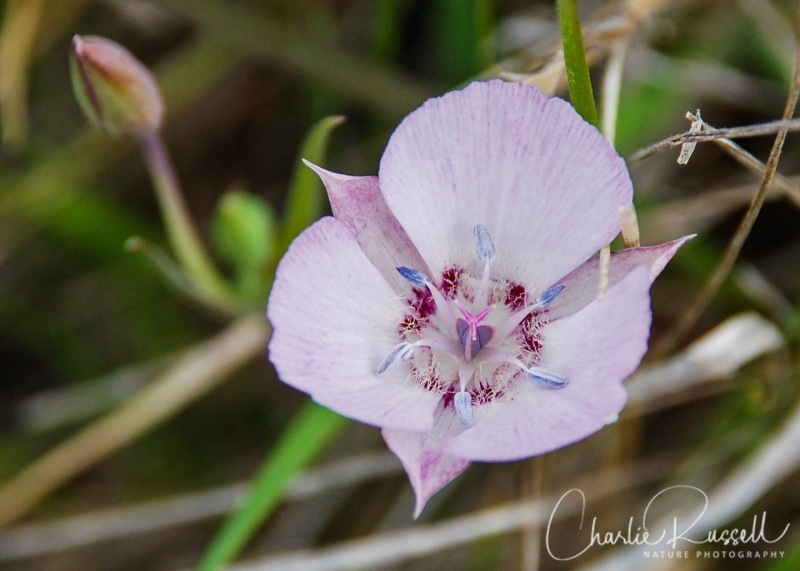
Another very rare plant is Marin dwarf flax. This is a very small, wispy plant, easy to overlook, but on this trip we found it on many portions of the trail.
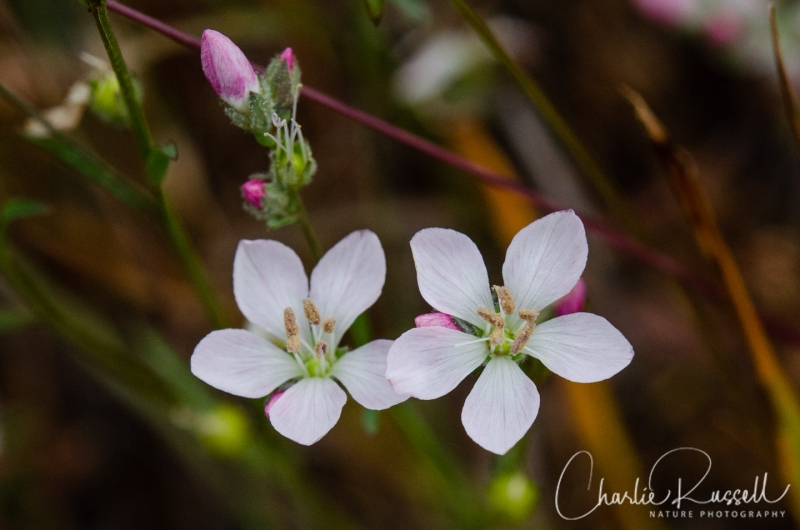
Ithuriel’s spear is found throughout Northern California. What is interesting is that the ones you find on Ring Mountain are much darker colored than what you’ll find in most locations.
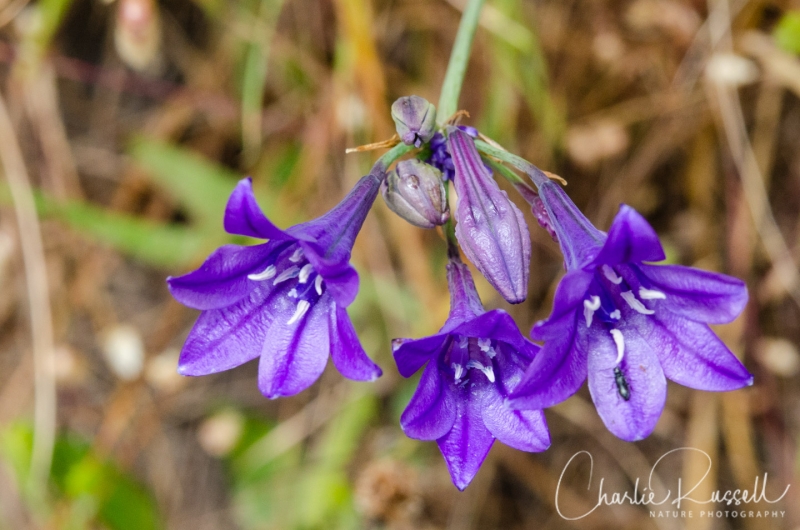
Long rayed brodiaea is very similar to White hyacinth, but it has a touch of blue on the outer side of the petals. From a botanist’s standpoint, the key difference is that the stamens are attached at different levels inside the corolla, but that can be hard to see.
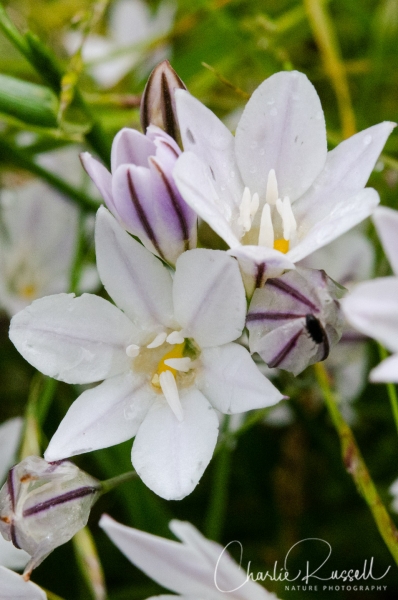
For the best viewing experience, click on the lightbox image below, and you can scroll through larger versions of the photos of many of the plants (and other things) that we found on this hike. All photos are available for purchase in a variety of formats.
The Hike
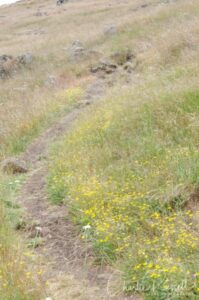
The Phyllis Ellman trail starts off with a low area that is bushy and full of non-native plants. It then heads straight up the mountain. There are many branches that can lead you in different directions, but if you just keep heading up the hill, you get to the harsher serpentine-based soils. This is more open, and this is where you will find more native plants, and the rare ones in particular.
Once at the top you have wonderful views of the San Francisco Bay, but it also tends to be a bit windy.
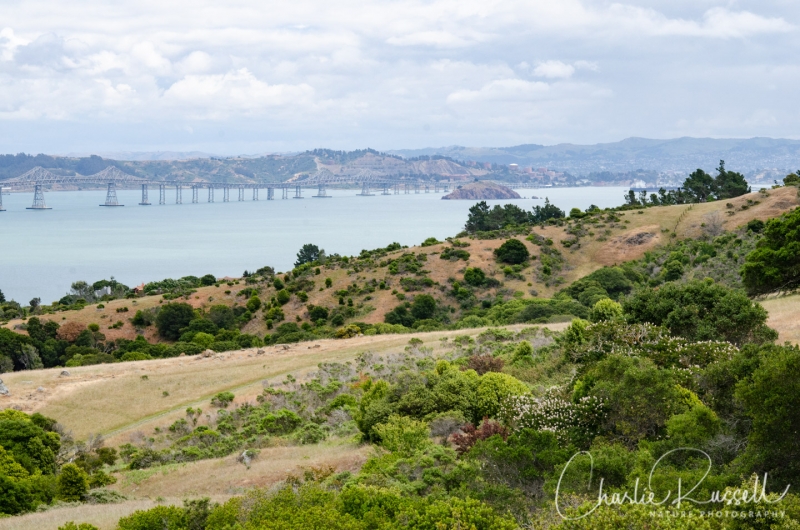
There are many trails criss-crossing the top of the mountain, so you can extend the hike quite a bit. In our case, we headed back down the same trail (more or less). Please pay attention to the signs that tell you to stay out of the more sensitive areas, which are set aside to protect the rare plants. You should, however, be able to find them along the trail.
Click the track to see an elevation graph. Move your mouse along the elevation graph to show the location on the map. The Refresh icon will re-center the map. The Expand icon will expand to full screen.
Ring-Mountain-Ellman-Trail
Profile
Directions
Ring Mountain Open Space Preserve is located near Corte Madera in Marin County, and is maintained by Marin County Parks. They have an excellent map of the area on their website. Dogs are allowed on leash only. The starting point for this trail is just a roadside pullout along Paradise Drive, with limited parking. There are trailhead signs here. There are no restroom facilities.
Timing is Everything
There is a fairly long flower season at Ring Mountain. We’ve visited it in March 2018 and (for this trip) in late May 2018, and found many flowers each time. You’ll get a different selection, though, as the season progresses. Many people are looking for the Mariposa lilies – the Oakland Mariposa Lily is more common in late March and in April, while the Tiburon Mariposa Lily doesn’t start showing until the very end of May, and on into early June.
Ring Mountain Phyllis Ellman Trail Wildflowers
Here’s a listing of the native plants that we found on this visit. The ones listed in color are endemic to California (that is, found only in California).
- Bluff lettuce, Dudleya farinosa
- California phacelia, Phacelia californica
- California poppy, Eschscholzia californica
- Checker bloom, Sidalcea malviflora
- Chick lupine, Lupinus microcarpus var. densiflorus
- Coastal tidytips, Layia platyglossa
- Common yarrow, Achillea millefolium
- Cream sacs, Castilleja rubicundula ssp. lithospermoides
- Dense flower owl’s clover, Castilleja densiflora ssp. densiflora
- Hayfield tarweed, Hemizonia congesta ssp. lutescens
- Hillside morning glory, Calystegia collina ssp. collina
- Ithuriel’s spear, Triteleia laxa
- Long rayed brodiaea, Triteleia peduncularis
- Marin dwarf flax, Hesperolinon congestum CNPS rank 1B.1
- Naked buckwheat, Eriogonum nudum
- Narrow leaf mule ears, Wyethia angustifolia
- Pitted onion, Allium lacunosum var. lacunosum
- Seep monkey flower, Erythranthe guttata
- Tiburon mariposa lily, Calochortus tiburonensis. CNPS 1B.1
- Western blue eyed grass, Sisyrinchium bellum
- Western larkspur, Delphinium hesperium ssp. hesperium
The following are non-native plants that we found on the hike as well. There were many more than this, but these are the ones that I photographed on this visit:
- Fuller’s teasel, Dipsacus fullonum
- Rattlesnake grass, Briza maxima
- Small flowered flax, Linum bienne


![Calochortus tiburonensis. CNPS 1B.1 and Federally listed as "Threatened". [FL0007] Tiburon mariposa lily](https://ibrakeforwildflowers.com/wp-content/uploads/cache/2018/08/RingMountain-20180525-146-1/193715530.jpg)





























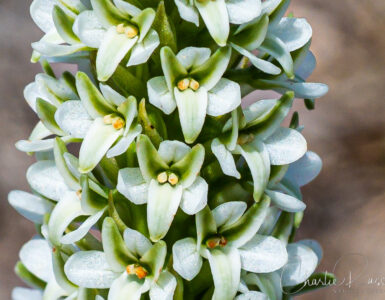

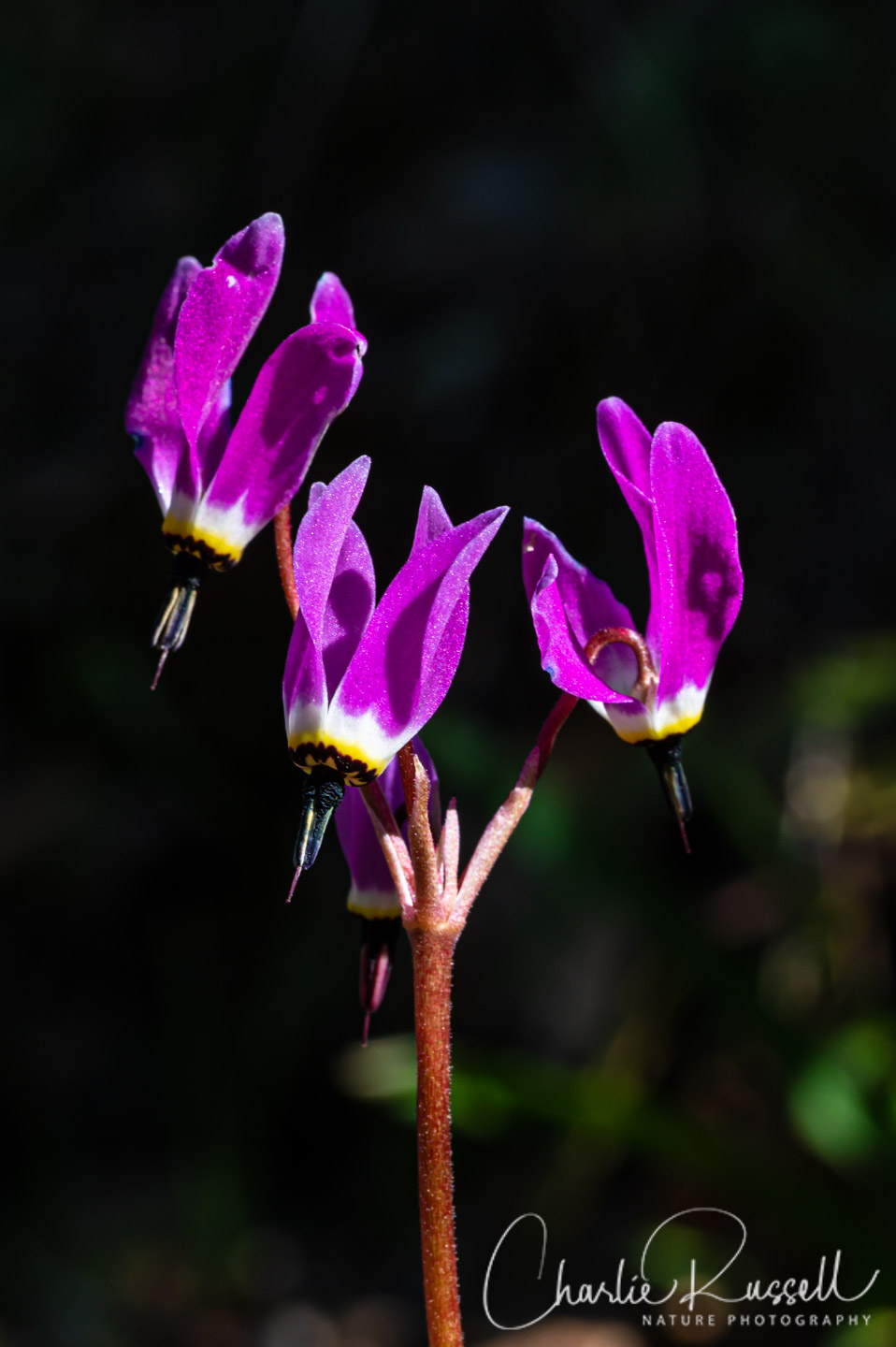
Add comment